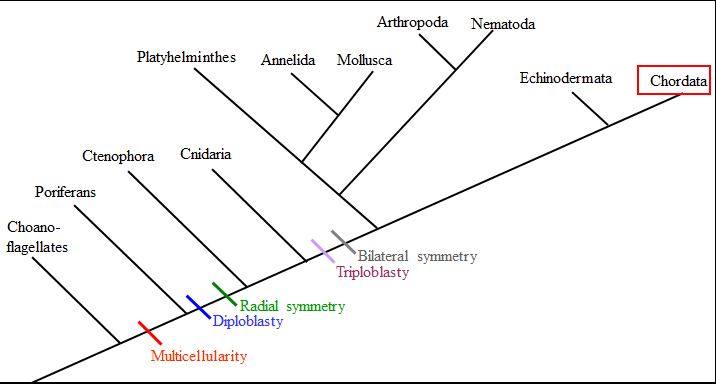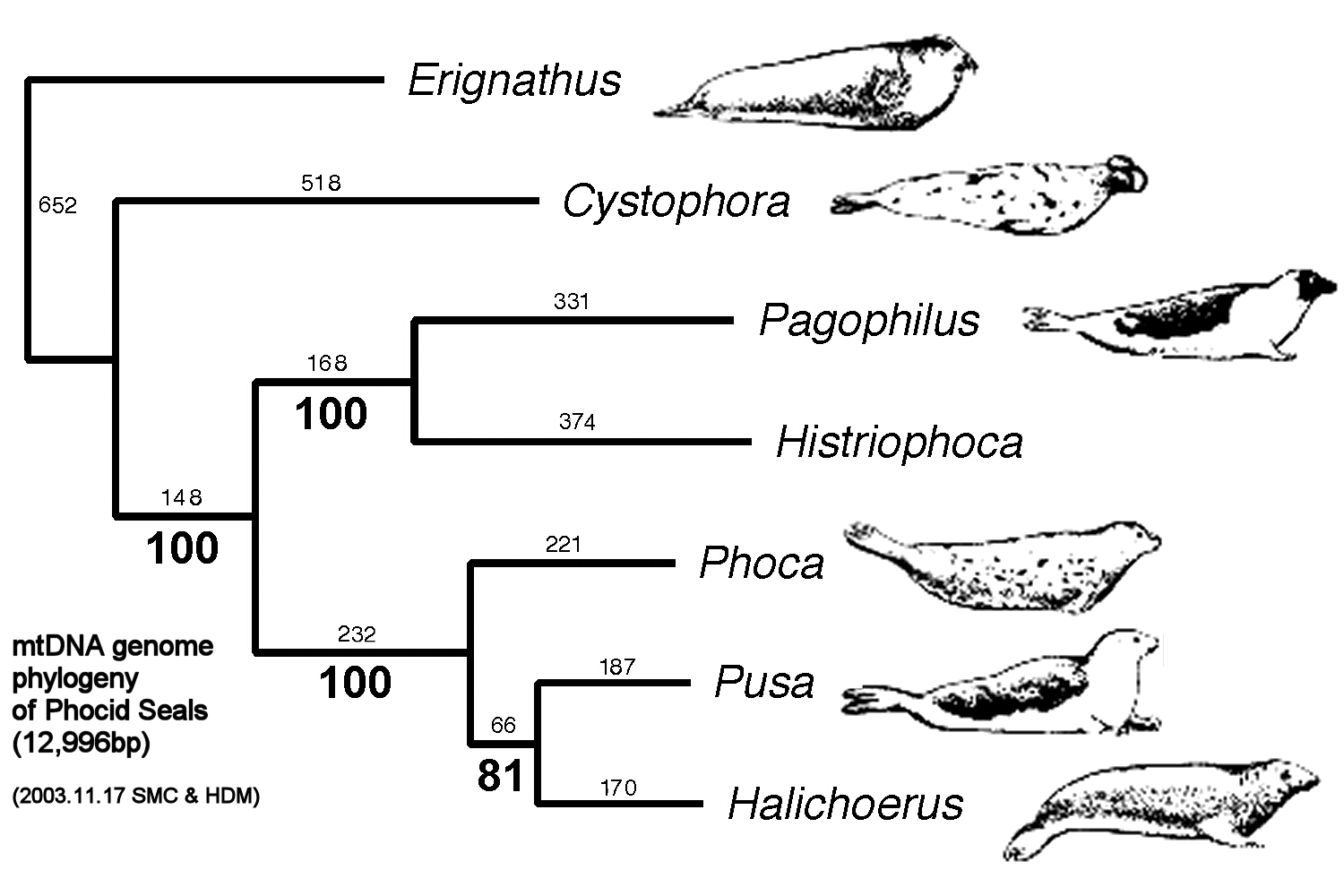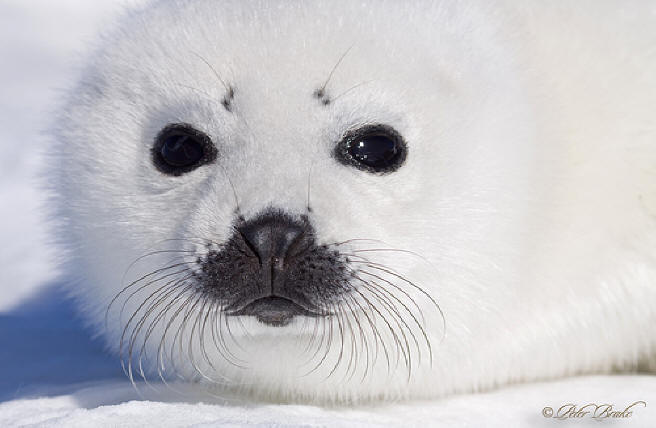Classification
When classifying organisms, scientists follow a specific
method. They organize them into groups and then smaller
subgroups of that group. In this classifying system they follow
the order Domain, Kingdom, Phylum, Class, Order, Family, Genus,
Species.
The harp seal is classified as follows:
Domain: Eukarya
Kingdom: Animalia
Phylum: Chordata
Class:
Mammalia
Order: Carnivora
Superfamily: Pinnipedia
Family: Phocidae
Genus: Pagophilus
Species: P. groenlandicus
Due to the fact that the harp seal has cells that contain
complex structures within a membrane, it is classified as
eukaryotic.
From there they are classified as Animalia because harp seals
are multicellular, heterotrophic (meaning they consume other
organisms for nutrition), lack cell walls, and most exclusively
to animals their embryos pass through a blastula stage. The
blastula stage is the early stage of development where an
embryo is a “hollow” ball of cells created when the fertilized
egg goes through cell division called cleavage. (Animals are a
part of the supergroup Unikonta then the sub-supergroup Opisthokonta
because the reproductive cells have a single flagella at base).
Harp seals are then classified as Chordate because at some stage
of development they contain these five characteristics: a
notochord (also known as a skeletal rod), a dorsal, tubular
nerve chord, pharyngeal pouches (also known as gill slits), an endostyle (which in the most basic terms can be described as a
pre-thyroid gland), and lastly a post-anal tail. These are not
the only characteristics of chordates, but they are the only
ones that are uniquely applicable to chordates alone.

Diploblasty: two
kinds of body tissue, ectoderm and endoderm
Triploblasty: three kinds of body tissue, ectoderm,
endoderm, and mesoderm
Radial symmetry: can be split in more than 2 ways
providing equal halves.
Bilateral symmetry: only one way to split organism and
create equal halves.
Next harp seals are classified in the order Carnivora because
they consume other organisms that are heterotrophic. Even more
simply stated, they are carnivores because they eat the meat of
other organisms, not plants.
From there they are considered to
be a part of the superfamily Pinniped, which literally means “fin foot” because they use
their fins as feet for locomotion on land.
The family that harp seals are considered to be a part of is
known as Phocidea or the earless seals due to the fact that they
do not have true ears on their heads. Sometimes animals in this
family are called crawling seals in order to set them apart from
the fur seals and sea lions of the family Otariidae.
Finally the genus they belong to is known as Phagocillus because
it is a harp seal, and they are not closely related to any other
marine mammal. Recently they have been made into their own
genus because they are less related to other marine species than scientists once
thought they were. Previously harp seals went under the genus
Phoca along with some other seal types.
The scientific name is Phagocillus groenlandicus because most
harp seals can be found in Greenland. It literally means
"ice-lover from Greenland", or if you are looking at its synonym
Phoca greolandica that means “Greenland seal”. They were
then given their common name after the dark harp shaped mark
that is displayed on the backs of organisms belonging to this
species.

SM Carr & HD Marshall, unpublished data 2004
This phylogenetic tree demonstrates that, according to a
molecular systematic classification, harp seals are no longer
known as Phoca greolandica because they are in fact not
as closely related to the hood seals, or Phoca vitulina
as morphological trees would suggest. They are actually more
related to the Histriophoca or spotted seals.
If you would like to learn about the adaptations of the harp
seal, follow this link! ADAPTATIONS
